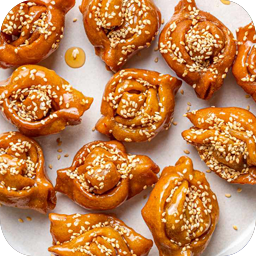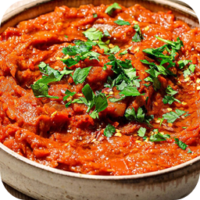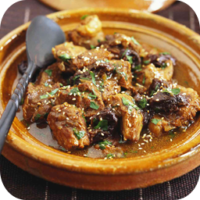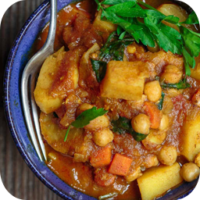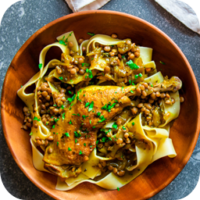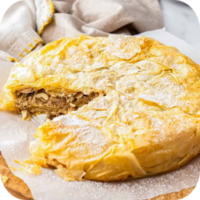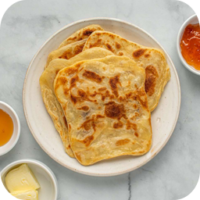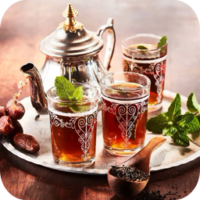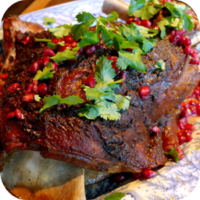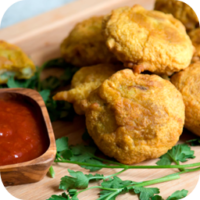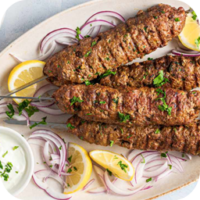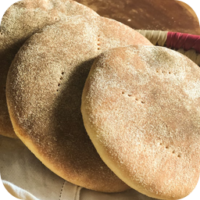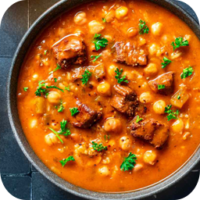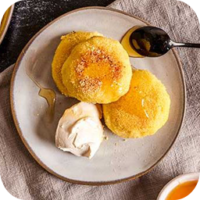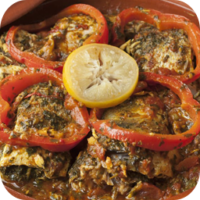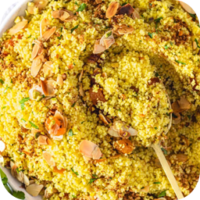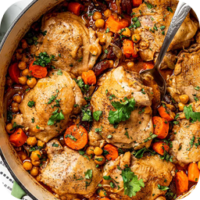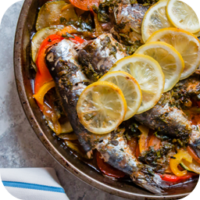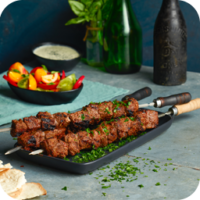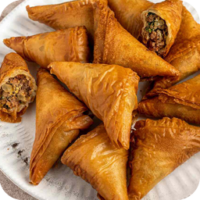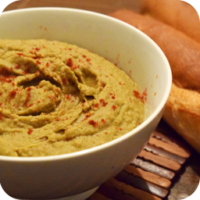Posted by theeatland
- Dec 24, 2024
- 74
- 0
Chebakia is a traditional Moroccan pastry that is especially popular during Ramadan and other special occasions. It is a sweet, fried dough that is shaped into intricate flower-like patterns, coated with honey, and sprinkled with sesame seeds. Chebakia is often enjoyed with a cup of Moroccan mint tea or served alongside other sweets during festive meals.
Key Features:
- Shape: The dough is rolled, twisted, and shaped into a flower or spiral pattern before being fried.
- Fried and Sweetened: After frying, Chebakia is dipped in honey and sometimes flavored with orange blossom water for a fragrant touch.
- Sesame Seeds: These are sprinkled on top for added crunch and flavor.
- Popular During Ramadan: Chebakia is a classic sweet often prepared during the holy month of Ramadan, alongside other Moroccan treats like baklava and sfenj.
Ingredients:
- Flour: The base of the dough.
- Sesame Seeds: Ground and whole sesame seeds are often added for flavor and texture.
- Butter or Olive Oil: Adds richness to the dough.
- Yeast: To help the dough rise.
- Orange Blossom Water: Adds a fragrant floral note.
- Cinnamon and Aniseed: Provide a warm, aromatic flavor.
- Honey: Used to coat the fried pastry and give it a sweet, sticky finish.
- Water: To bring the dough together.
Preparation:
- Make the Dough: Mix flour, sesame seeds, cinnamon, aniseed, yeast, and a pinch of salt. Add butter or oil, then gradually add water until the dough forms. Knead until smooth and let it rest.
- Roll and Shape: Once the dough has rested, roll it out and cut it into strips. Shape each strip into a flower-like pattern by folding and twisting the dough.
- Fry: Heat oil in a deep pan and fry the shaped dough until golden brown and crispy.
- Coat in Honey: Once fried, the Chebakia is immediately dipped in warm honey (sometimes with a touch of orange blossom water) and then sprinkled with sesame seeds.
- Cool and Serve: Allow the Chebakia to cool before serving, letting the honey set and the pastry firm up.
Cultural Significance:
- Ramadan Tradition: Chebakia is a traditional Moroccan dessert often prepared during Ramadan to break the fast. It is served alongside other sweets like dates and fawda.
- Symbol of Hospitality: Offering Chebakia to guests is a sign of generosity and Moroccan hospitality, especially during special occasions.
- Celebratory Food: It’s a festive food enjoyed during weddings, holidays, and family gatherings.
Serving:
Chebakia is typically served with Moroccan mint tea and enjoyed as a sweet treat, either at the end of a meal or as a snack during Ramadan to break the fast. It can be stored for several days and is often enjoyed with family and friends.
Flavor Profile:
The pastry is crispy on the outside, with a soft, slightly chewy interior. The honey gives it a rich sweetness, while the sesame seeds add crunch. The spices, including cinnamon and aniseed, give Chebakia a warm, aromatic flavor that’s perfect for the festive atmosphere.
Tags:
- aniseed flavor
- Chebakia recipe
- cinnamon sweets
- crispy pastries
- festive Moroccan food
- flower-shaped pastry
- fried dough pastry
- homemade Chebakia
- honey-coated sweets
- Moroccan cuisine
- Moroccan desserts
- Moroccan holiday desserts
- Moroccan honey pastries
- Moroccan mint tea
- Moroccan pastry
- Moroccan treats
- orange blossom water
- Ramadan dessert
- sesame seeds
- sweet Moroccan recipe
- sweet Moroccan snack
- traditional Moroccan sweets
Recommended Posts
- Dec 24, 2024
- 87 read
Zaalouk is a popular Moroccan dish made from eggplants and tomatoes. It...
Read Article- Dec 24, 2024
- 83 read
Moroccan Tangia (or Tanjia) is a traditional slow-cooked dish from the city...
Read Article- Dec 24, 2024
- 82 read
Moroccan Tagine is a traditional dish and cooking method central to Moroccan...
Read Article- Dec 24, 2024
- 74 read
Moroccan Rfissa is a traditional and hearty dish often associated with special...
Read Article- Dec 24, 2024
- 87 read
Moroccan Pastilla (also spelled Bastilla) is a traditional, savory pie that combines...
Read Article- Dec 24, 2024
- 81 read
Msemen is a traditional Moroccan flatbread that is widely enjoyed throughout Morocco...
Read Article- Dec 24, 2024
- 83 read
Moroccan Mint Tea is one of the most iconic beverages in Moroccan...
Read Article- Dec 24, 2024
- 78 read
Méchoui is a traditional Moroccan dish that typically consists of roast lamb...
Read Article- Dec 24, 2024
- 67 read
Maaqouda (also spelled Maqouda) is a popular Moroccan snack or side dish,...
Read Article- Dec 24, 2024
- 91 read
Moroccan Kofta is a traditional Moroccan dish consisting of spiced ground meat,...
Read Article- Dec 24, 2024
- 74 read
Khubz is the traditional Moroccan bread, a staple food in Moroccan cuisine,...
Read Article- Dec 24, 2024
- 90 read
Harira is a traditional Moroccan soup, widely loved for its rich, comforting,...
Read Article- Dec 24, 2024
- 81 read
Harcha is a traditional Moroccan semolina flatbread that is often enjoyed for...
Read Article- Dec 24, 2024
- 87 read
Fish Chermoula is a traditional Moroccan dish that features fish marinated in...
Read Article- Dec 24, 2024
- 74 read
Couscous is a traditional Moroccan dish made from steamed semolina wheat granules....
Read Article- Dec 24, 2024
- 76 read
Moroccan Chicken Tagine is a traditional Moroccan dish that features chicken slow-cooked...
Read Article- Dec 24, 2024
- 82 read
Charmoula Sardines (or Sardines with Charmoula) is a popular Moroccan dish where...
Read Article- Dec 24, 2024
- 72 read
Moroccan Brochettes are traditional Moroccan kebabs, typically made by skewering marinated pieces...
Read Article- Dec 24, 2024
- 89 read
Moroccan Briouat (also spelled Briwat) are traditional Moroccan pastries that can be...
Read Article- Dec 24, 2024
- 74 read
Moroccan Bissara is a traditional Moroccan dish made primarily from dried fava...
Read Article
